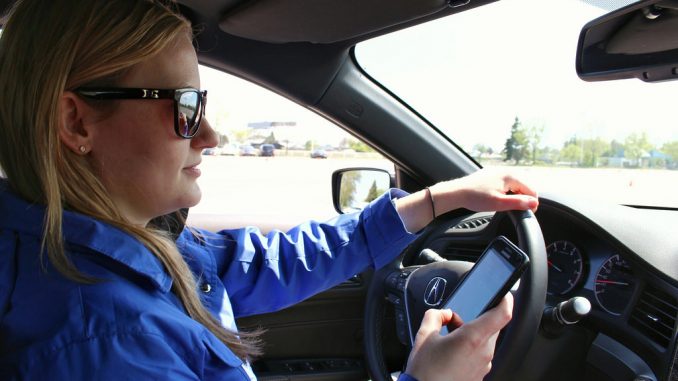

There are over 24.6 million licensed drivers in Canada according to Transport Canada (2013). Collectively these drivers were responsible for 1,741 collision fatalities and over 120,000 injuries. Distracted driving is often cited as one of leading causes of traffic collisions on public roads.
To explore what it means to drive distracted and to have a dialogue about safe driving, State Farm invited a handful of Canadian media out to lakefront Toronto last week. As a part of the experience, journalists had an opportunity to drive timed loops on a closed course while being both completely focused and while distracted.
During the initial laps we ran the fastest times we could. Then we were introduced to distractions: tune to a channel on the radio, make a call, send a text, operate climate control, read an unrelated sign as we drove past it… the usual suspects of distracted driving.
Across the board every journalist–most of whom, like me, are automotive journalists who have been exposed to more professional driver training than most–saw their lap times increase significantly during the distracted laps.

Our best times without distractions sat around the 34-second mark while driving distracted bumped those times to the high 40-second range. Times alone don’t tell the whole story; I can attest to being exceedingly flustered during my distracted laps as I struggled to keep from killing cones and maintain speed.
Driving fast on a closed course may be an extreme example of distracted driving, but the lessons remain the same. If you’re driving distracted, your ability to observe, gauge and react to the things around you becomes impaired.
This past February Sate Farm conducted a national survey polling 1,300 Canadian drivers on their driving habits. Put mildly, the results are concerning.
93% of respondents feel that other drivers drive while they are distracted. However, only 35% admit to driving distracted themselves. Seems nearly all of us drivers are in denial about what it means to drive distracted.

One out of three survey respondents acknowledged that they check their phones while behind the wheel. 35-44 year olds were the biggest offenders of texting and driving (16%) followed closely by those 18-34 (15%).
Older drivers, those 55+ say that they are most distracted by things outside their vehicle like houses and people.

A 2011 study by Alberta Transportation determined that distracted drivers are three times more likes to wreck than attentive drivers.
Cell phone use is perhaps the most pervasive driving distraction, and according to a Virginia Tech Transportation Institute study from 2010, you are 26 times more likely to be in a crash or near crash event while text messaging on a cell phone.
It is no surprise then that all ten Canadian provinces along with Yukon and Northwest Territories have some form of cell phone use/distracted driving legislation in place. After all, the two biggest deterrents to distracted driving according to survey respondents is either increased fines or having an accident.

What’s the worst instance of distracted driving you’ve observed lately? Was it you doing it?
Photographs and illustrations courtesy of State Farm Canada.
For editorial inquiries: kanishka[at]oyetimes.com

Not sure where this guy was when he was writing this, but I can totally text while in my car. I just do it when there aren’t any cars around me or when I’m stopped at lights.
There’s no point in driving an elaborate driving course to show that texting and driving doesn’t work, we don’t do that on the road anyway. This isn’t 1965 where people had wayy too much free time on their hands. We’re all busy and have busy lives. Texts, emails and even social media are things that require immediate attention, not a response sometime later that day.